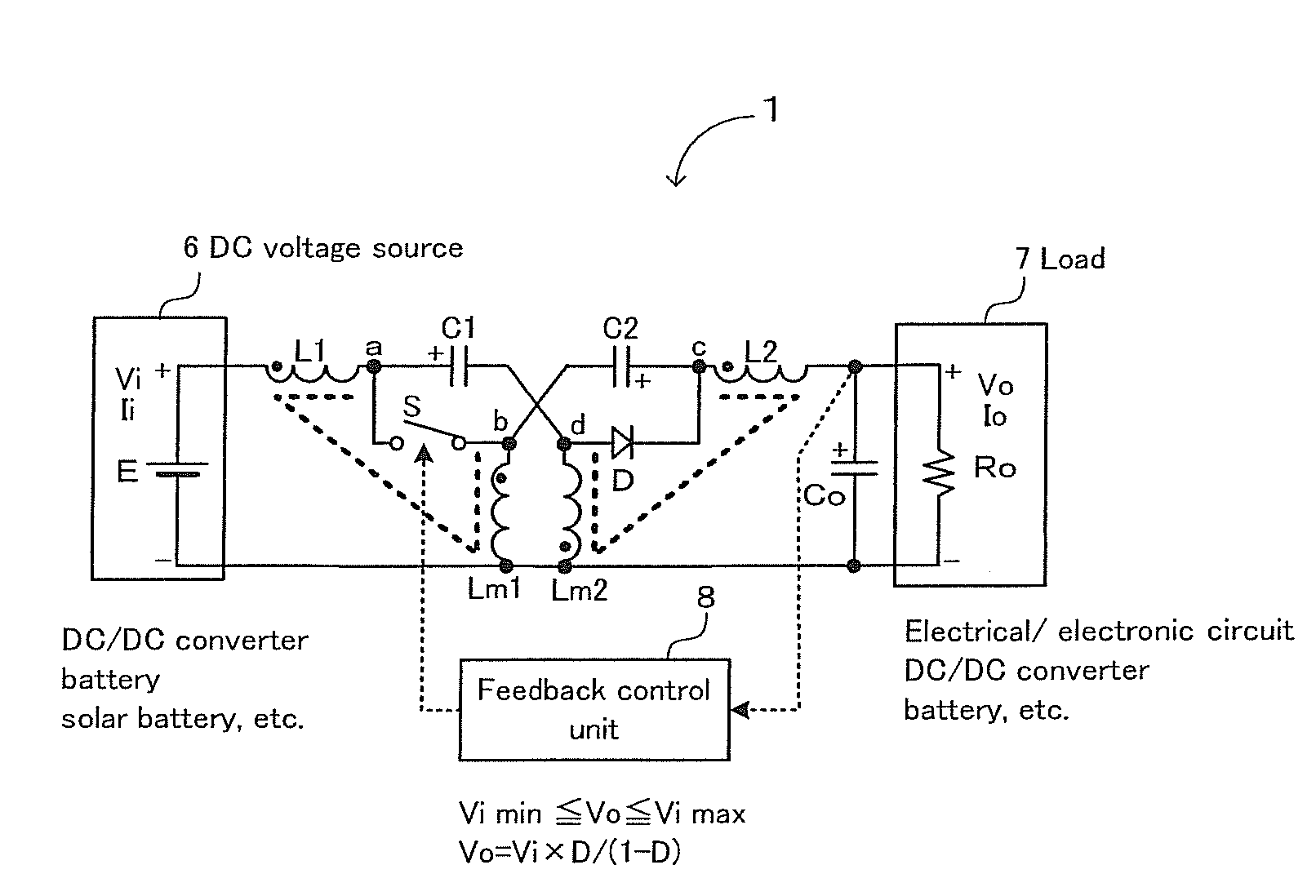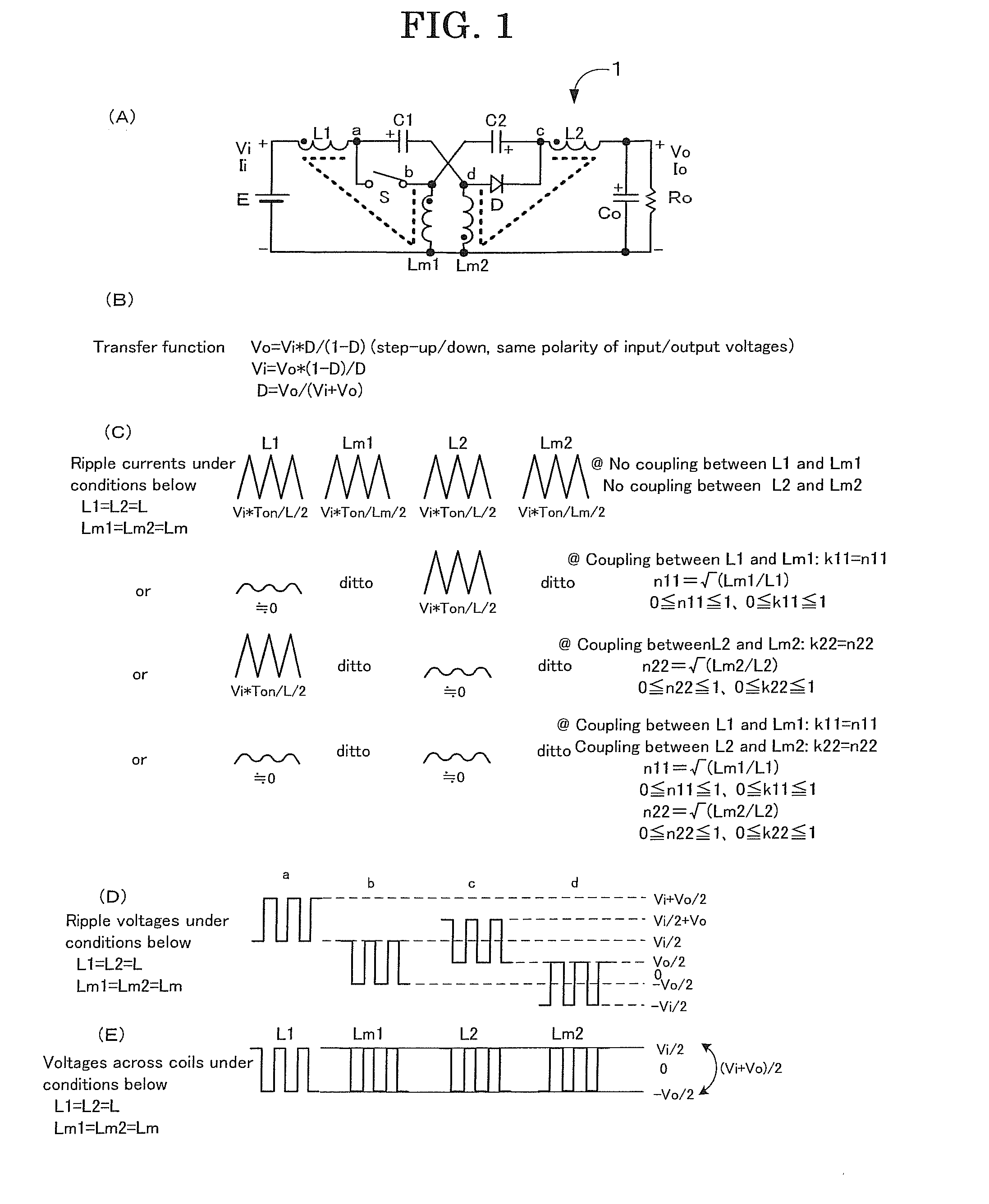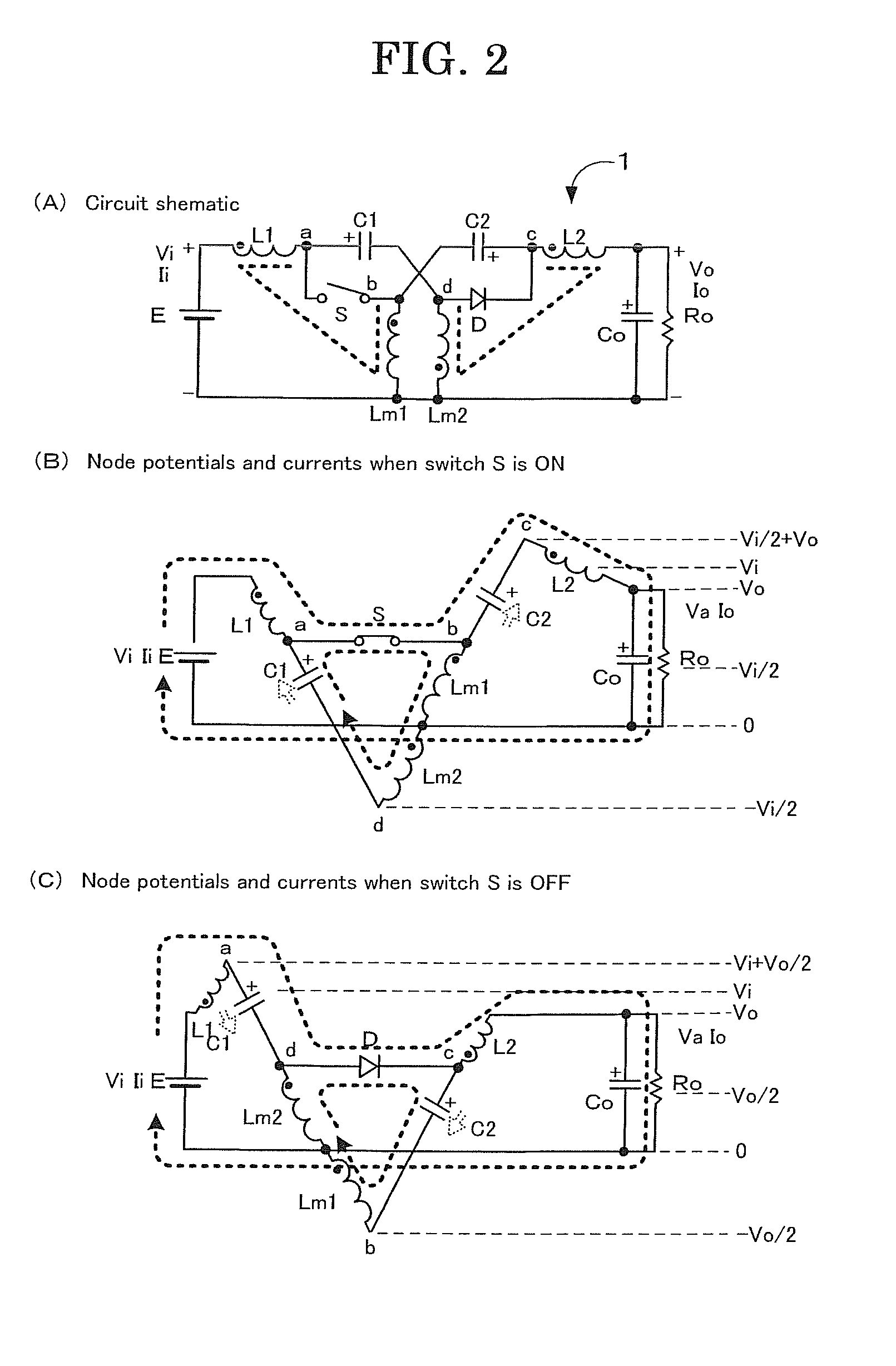DC-DC Converter
a converter and dc technology, applied in the direction of electric variable regulation, process and machine control, instruments, etc., can solve the problems of difficult to properly design the dc-dc converter, and generally impossible or very difficult to obtain such output voltage directly from the voltage source, etc., to reduce noise, not complicated and expensive
- Summary
- Abstract
- Description
- Claims
- Application Information
AI Technical Summary
Benefits of technology
Problems solved by technology
Method used
Image
Examples
first embodiment
[0040]Firstly, a reference is made to FIG. 1 illustrating a first embodiment of the DC-DC converter according to the present invention. In FIG. 1, (A) is the circuit schematic of the DC-DC converter according to the present invention, (B) is a transfer function, (C) is ripple currents, (D) is a ripple voltage and (E) is a coil voltage.
[0041]As shown in FIG. 1(A), the DC-DC converter 1 comprises an input voltage source E, an input coil (or an inductor) L1, an output coil L2, a first intermediate coil Lm1, a second intermediate coil Lm2, an input (or a first intermediate) capacitor C1, an output (or a second intermediate) capacitor C2, a switch S, a diode D and a parallel connection of a load resistor Ro and an output (or a smoothing) capacitor Co.
[0042]The input coil L1, the input capacitor C1 and the second intermediate coil Lm2 are connected in series between the both terminals of the input voltage source E. Connected in series between both ends of the parallel connection of the lo...
third embodiment
[0081]FIG. 10 is the circuit schematic of the DC-DC converter according to the present invention. This DC-DC converter 3 is an example of using power MOS FETs (MOS type field effect transistors) as the switch S and the diode D. Diodes that are connected in parallel with the power MOS FETs represent parasitic diodes of the power MOS FETs. The ON time of the switch S is controlled by the feedback control section 8 so that the output voltage will be a desired voltage. During the OFF period of the switch S, the power MOS FET that replaces the diode D is turned ON (synchronized rectification), thereby enabling to reduce power loss of the power MOS FET. Since the other circuit configurations remain unchanged, no duplicated operation will be given herein.
fourth embodiment
[0082]Now, FIG. 11 shows the circuit schematic of the DC-DC converter according to the present invention. The basic circuit configuration of this DC-DC converter 4 is the same as the DC-DC converter 3 as shown in FIG. 10. However, a close look at this DC-DC converter 4 proves a symmetrical configuration at the left and right sides, or the input-output sides. It has been described hereinabove that the DC-DC converter operates as the step-up / down converter with the left and right sides acting respectively as the input and output sides by controlling the ON time of the switch S. Because of the symmetrical configuration, it can be operated as a step-up / down converter with the right and left sides acting as the input and output sides when controlling the ON time of the power MOS FET used as a replacement of the diode D. In other words, this DC-DC converter 4 can also be operated as a bi-directional step-up / down converter. A DC power supply bus having the DC voltage source 6 at the left s...
PUM
 Login to View More
Login to View More Abstract
Description
Claims
Application Information
 Login to View More
Login to View More - R&D
- Intellectual Property
- Life Sciences
- Materials
- Tech Scout
- Unparalleled Data Quality
- Higher Quality Content
- 60% Fewer Hallucinations
Browse by: Latest US Patents, China's latest patents, Technical Efficacy Thesaurus, Application Domain, Technology Topic, Popular Technical Reports.
© 2025 PatSnap. All rights reserved.Legal|Privacy policy|Modern Slavery Act Transparency Statement|Sitemap|About US| Contact US: help@patsnap.com



